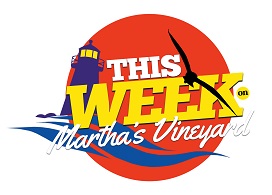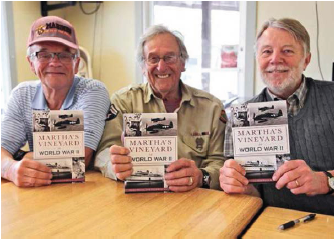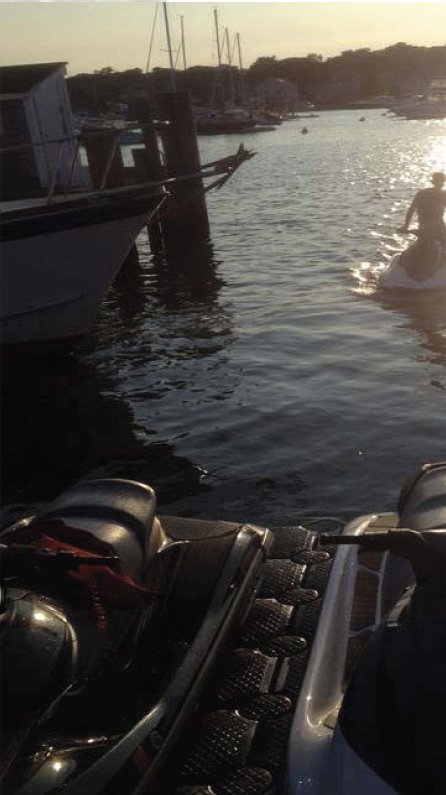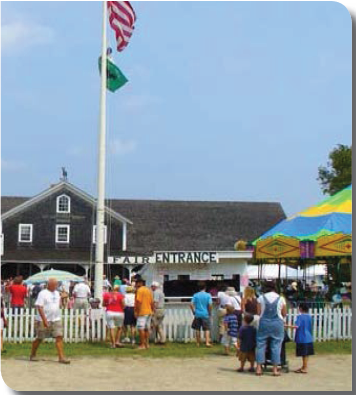A New Collaborative Work by Local Authors Paints a Picture of Martha’s Vineyard in World War II
by Chaiel Schaffel
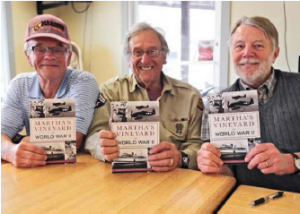 A modern day visitor to the Gay Head cliffs may not know that underneath one’s feet, buried in sand, lies an abandoned military bunker. The Martha’s Vineyard of 1939-1942 was a far cry from the balmy, tourist-centric island we see today. Co-authors Thomas Dresser, Herb Foster, and Jay Schofield have decided to pry open a window into World War Two era Vineyard by penning their first collaborative work together, Martha’s Vineyard in World War II.
A modern day visitor to the Gay Head cliffs may not know that underneath one’s feet, buried in sand, lies an abandoned military bunker. The Martha’s Vineyard of 1939-1942 was a far cry from the balmy, tourist-centric island we see today. Co-authors Thomas Dresser, Herb Foster, and Jay Schofield have decided to pry open a window into World War Two era Vineyard by penning their first collaborative work together, Martha’s Vineyard in World War II.
In the book, the authors discuss both the physical and social effects of World War II on the Island. This Week recently attended a presentation by the three authors on their book. There, the authors discussed a few of the notable topics in the new work. Among these talking points were the abandoned military structures on the island, German U-Boat involvement in Martha’s Vineyard, Army/Navy military drills. The social impact of the war on the citizens of the island was also discussed, as they experienced a world war living in the test bed of the United States military.
Tom Dresser noted in the presentation that the East Coast Command set up two military bunkers on the Island, both at Gay Head. One of the bunkers has since fallen into the sea, and the other was filled with sand in the 1950’s. Herb Foster added that the remains of the signal and radio office on Peaked Hill, now known as Radar Hill, are still visible, while the site itself has been turned into a Coast Guard run rescue station.
It may come as a surprise to some that in the early years of the war, there was high German submarine involvement off of the Martha’s Vineyard coast. Dresser shared that throughout the war, a total of 19 different submarines circled the island, and at one point, 15 submarines menaced the Vineyard at one time. In order to train for the invasion of Normandy, or D-Day, the military ran training drills in and around Martha’s Vineyard. Some soldiers were shipped in by amphibious vehicles and ships, while some parachuted in throughout the course of the mock invasions.
The social impact of the war on Martha’s Vineyard left a changed island in its wake. The small, isolated Vineyard of the past was opened to new frontiers as servicemen streamed in from around the country, and brought new cultures and ideas with them. To ready themselves for war, the people of the Vineyard participated in readiness drills in the event of a bombing run by the Germans and rationing was practiced heavily. Jay Schofield mentioned that the war created collaboration between the citizens on the island. Specifically, the women of different towns on the island would volunteer to help other women when they needed extra hands to sew blankets for soldiers. Civilian spotters were set up to report any disturbance or possible U-Boat sighting.
The Co-authors kindly agreed to sit down with This Week and discuss themselves and their book in an interview.
TW: What do you think was your motivation behind writing this book? What made you want to tell this story?
TD: To be honest, in the beginning, I wasn’t all that interested in it. It was the other two guys in the beginning. But Jay had written about it in the past, and Herb wanted to write it. That, combined with my publisher, made me want to do it. We each contributed something to the puzzle.
HF: I went to the library, and I was looking under Martha’s Vineyard, and there was just nothing there about World War II! That’s what made me want to write it, I think.
JS: It was the letters from my father and uncles during the war that made me want to write it.
TW: In what way do you think the war changed the face of the Vineyard and the lives of its citizens?
TD: There was a very major impact with all of the servicemen on the island that changed the island from a very isolationist place to a more open one. Young servicemen from Kansas and the [heartland] brought an awareness to the Vineyard that other things were going on in the country.
HF: It changed the Vineyard irrevocably, I think.
JS: Yes, it taught that you don’t need to go to war to help out the cause. Everybody did their part, and it brought an awful lot of servicemen to the Vineyard after the war. They told their story and popularized the Vineyard in the country.
TW: What do you think was the hardest part of writing this book?
TD: There was so much information, it was hard to zero in and limit ourselves. We had to cut probably five thousand words off of our manuscript.
JS: Hardest part about the book was scaling back on the information received. The flood of publicity we received after we started to tour contributed to the information we had.
HF: It was a different America back then. All of the information was hard to handle. We’re even talking about making a second edition!
For more information, visit www.tomdresser.com. The schedule for additional presentations and informational opportunities in the summer of 2014 is reproduced below. July 8 – Howes House, West Tisbury , Conversations, 9:30 – 11 am, July 8 – Tisbury Street Fair – Booth July 17 – Aquinnah Public Library, 5 pm August 13 – Edgartown Library, 7 pm August 21-24 – Agricultural Fair
